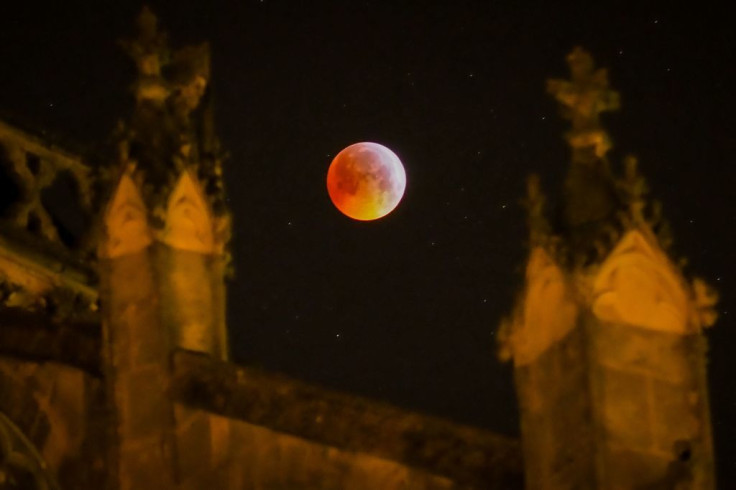'Super Blood Moon': See Stunning Images Of Rare Celestial Event [PHOTOS]

The "super blood Moon," the only total lunar eclipse of 2019, just happened, and many skywatchers captured photos of the stunning celestial event.
On Sunday night, the Moon turned an eerie shade of red in an event called the super blood Moon. The total lunar eclipse could be observed by people in the Americas and northern and western Europe. In New York, some photographers braved the freezing temperatures to take pictures of the eclipse above the city's famous skyline. People in other cities in the U.S. also made sure to capture the stunning sight.
Waiting for the #superbloodmoon over Manhattan pic.twitter.com/0CrCGrqvE0
— James Rogers (@jamesjrogers) January 21, 2019
Fortunately we had clear skies for the #SuperBloodMoon tonight! A tripod and zoom worked well. pic.twitter.com/mZNyrnc1UF
— Matt MacDonald (@meteo_matt) January 21, 2019
I hope everyone got to see how beautiful the #SuperBloodWolfMoonEclipse is! I was able to take a pretty nice shot of it, got really lucky & was able to pull off on the side of the road for a minute to get this shot! Please share it with your friends!#supermoon #SuperBloodMoon pic.twitter.com/kiKS3MFkwq
— Matt Brodie (@TheMattBrodie) January 21, 2019
Another shot, this one from just before sunrise #SuperBloodMoon pic.twitter.com/AKnU36E0OZ
— Jack Bacon (@Jrbacon50) January 21, 2019
Check out more photos of the super blood Moon here.
According to NASA, the super blood Moon began at 11:41 p.m. EST on Sunday, Jan. 20, with the greatest eclipse appearing at 12:12 a.m. EST on Monday, Jan. 21. The total lunar eclipse ended at 12:43 a.m. EST on Jan. 21.
The super blood Moon got its name from the Moon's proximity to the Earth and the color it turns during this phenomenon.
“Visible for its entirety in North and South America, this eclipse is referred to by some as a super blood moon – ‘super’ because the Moon will be closest to Earth in its orbit during the full moon and ‘blood’ because the total lunar eclipse will turn the Moon a reddish hue,” NASA explained in a statement.
The total lunar eclipse that occurs in January is also known as a "super blood wolf Moon" as the full Moon that happens during this month is called the Wolf Moon in North America. Native Americans gave it the name wolf because the full Moon occurred at a time of year when wolves would be howling with hunger, according to Old Farmer's Almanac.
A total lunar eclipse occurs when the sun, Earth and Moon are in a straight line for a short period of time while the Moon is also near perigee or the closest point the Moon will approach Earth during its orbit. During this time, the entire Moon enters the Earth's shadow, and then our planet's atmosphere turns the Moon red during the eclipse.
“As sunlight passes through it, the small molecules that make up our atmosphere scatter blue light, which is why the sky appears blue,” NASA said. “This leaves behind mostly red light that bends, or refracts, into Earth’s shadow. We can see the red light during an eclipse as it falls onto the Moon in Earth’s shadow.”
The super blood Moon is just the first of three full-moon supermoons this year, but this will be the only total lunar eclipse. The supermoon that will be occurring on Feb. 19 will be closer, while the March 20 one will be the farthest from Earth.
© Copyright IBTimes 2025. All rights reserved.




















